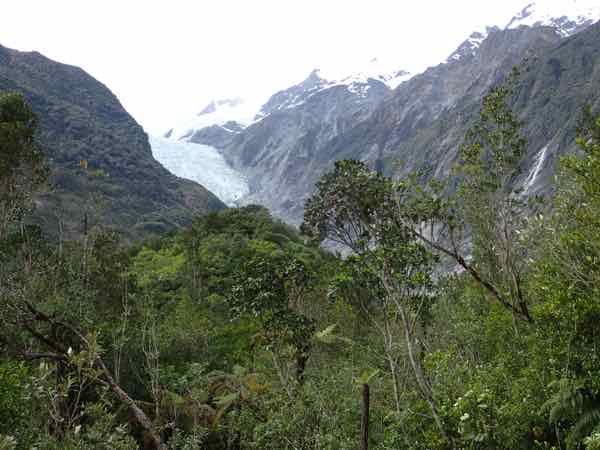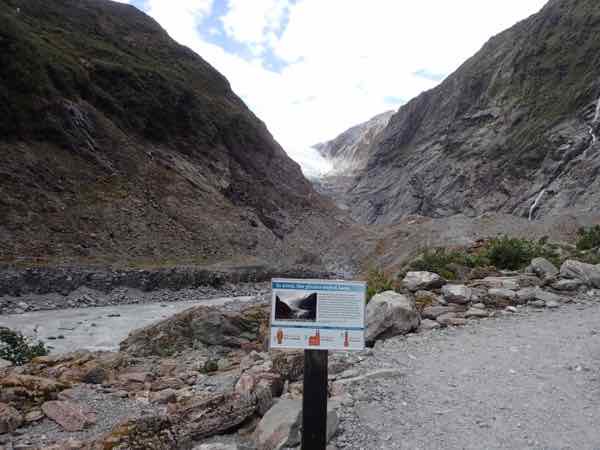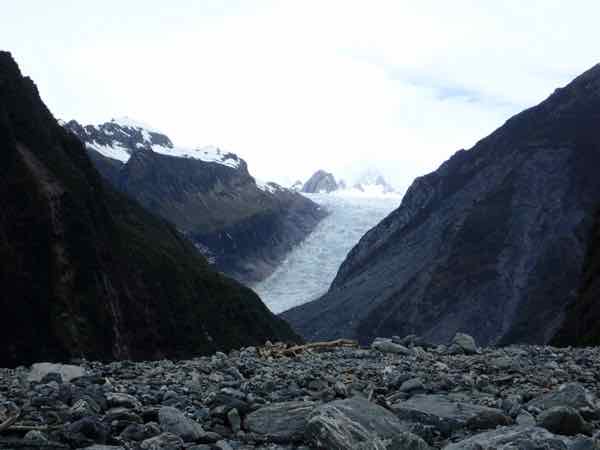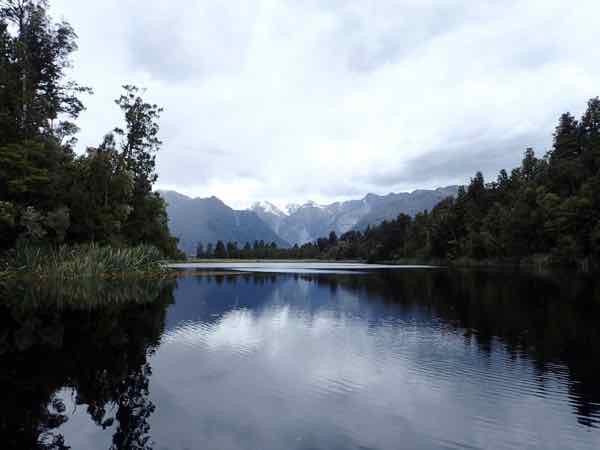Glacier country

Caramor - sailing around the world
Franco Ferrero / Kath Mcnulty
Tue 27 Nov 2018 08:21
In Franz-Josef village (named after the Emperor by the Austrian explorer Julio Von Haast) we enjoyed a great meal in a pub stuck between the heliport, a light aircraft company and the river jet and skydive venture. The next morning we were ready for our hike up to the glacier. From the valley, the Franz-Josef Glacier looked impressive.
Franz-Josef Glacier
The car park was vast, but luckily it was still early and a long way from full. The gravel path was wide and well-constructed with great views of the moraine and waterfalls on the way. The interpretation gave us walkers food for thought.
The first sign read:
“In 1867, the glacier came down to this spot.” Today, it's a well established woodland.
In 1867 the glacier came down to here
Further up the path, the second sign read:
“In 1908 the glacier ended here.
Population: 1908 - 1,750,000,000 2016 - 7,405,000,000
CO2 concentration: 1908 - 299ppm 2016 - 405ppm
Global Av. Temp. 1908 - 13.57 C 2016 - 14.87 C”
In 1908 the glacier ended here
The population increase between 1908 and 2016 was the figure that shocked me. In just over a hundred years, we are four times more people on the planet. I knew that population increase was fast, but when numbers are given in billions, it all becomes a bit abstract. It’s amazing that we still have room to move, and hardly surprising then that when I go back to Geneva I find it crowded, or that the Franz-Josef car park is so vast, because we all aspire to visit beautiful places.
There were a couple more panels and the last one was where the glacier had reached in 2009. That’s just 9 years ago!
In 2009, the glacier ended here
The path continued to a look-out 500m from the foot of the Franz-Josef Glacier. Dark clouds gathered over the surrounding peaks and weighed down on my mood. This magnificent river of ice is now just a shadow of its former self.
Back down at the car park, more vehicles were arriving every minute. We decided to move on, we hadn’t anticipated the hordes.
Our route towards Milford Sound passed by Fox Glacier so we decided to stop. The main access road is closed after a substantial landslide but we worked out that we could bypass the closed section by going to a different car park and combining a couple of walks.
After 10 minutes walking we realised that our alternative wasn’t possible either. It wasn’t just the main access road that had been taken out by the landslide but the whole river valley and the river had changed course. The Department for Conservation hasn’t reinstated anything yet as the land is still very unstable.
Fox Glacier
Disappointed, we retreated. As Angie and I still fancied a walk, we left Franco in the coffee shop to do some work and took a quick stroll around Lake Matheson, famous for its reflections of Mount Cook on calm days. We saw short fin eels swimming around. Their ecology is rather incredible, they spend their life, usually 15-30 years, but sometimes as many as 80, living in fresh water, then they set off on a very long ocean journey to the Pacific. Once they reach their destination (probably deep ocean trenches near Tonga), the females lay millions of eggs fertilised by a male and then both fish die. The larvae reach New Zealand by drifting on ocean currents, they then turn into elvers (young eels) and make their way up rivers until they find suitable adult habitat.
Lake Matheson
As soon as we left glacier country, the queues of campervans thinned out and soon we were alone on the road. We stopped for the night next to a beautiful wild river.





